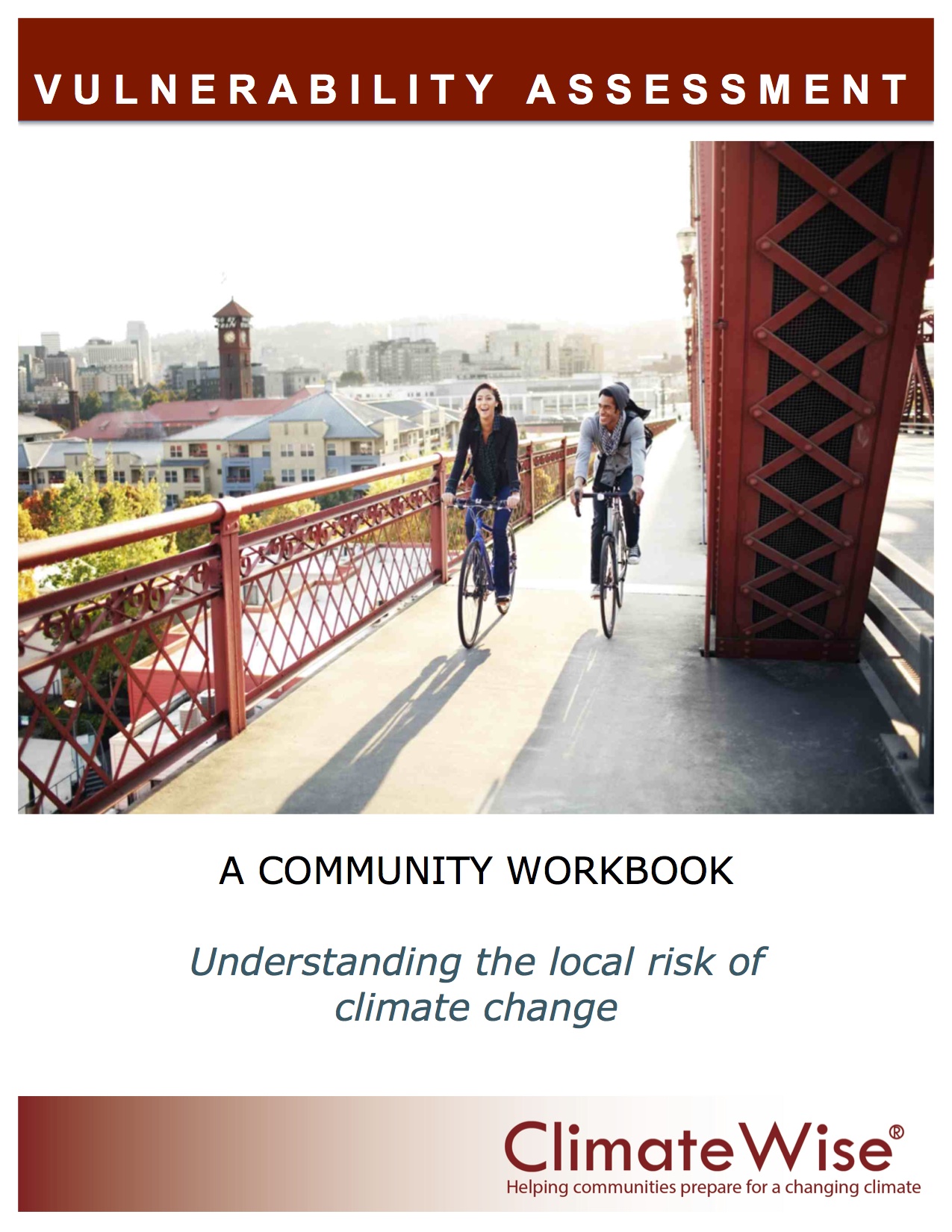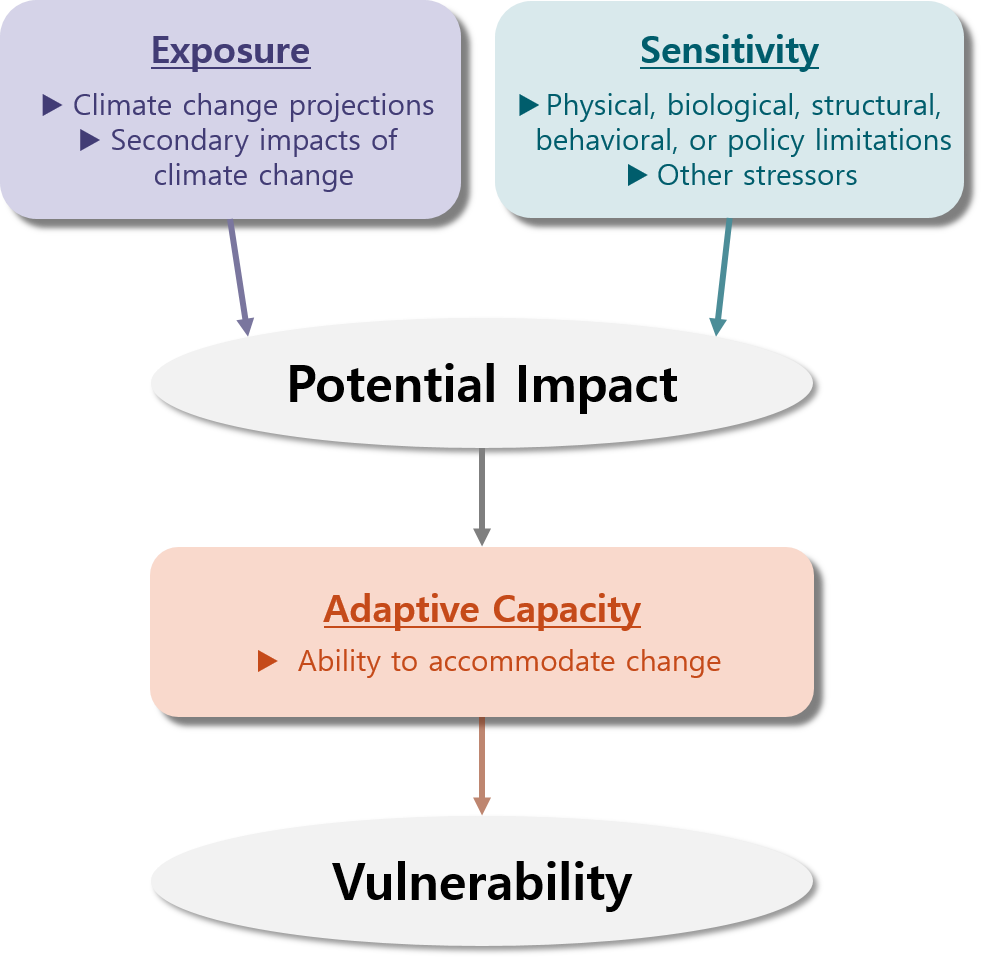ClimateWise Vulnerability Assessments
Do you need help identifying your community’s vulnerabilities to extreme and unexpected events?
 Climate change is already affecting our communities through increasingly frequent and severe droughts, floods, extreme storms, sea level rise, and heat waves. And it is expected to worsen over the next few decades, even if we drastically reduce emissions today. While climate change is a global phenomenon, the impacts are local.
Climate change is already affecting our communities through increasingly frequent and severe droughts, floods, extreme storms, sea level rise, and heat waves. And it is expected to worsen over the next few decades, even if we drastically reduce emissions today. While climate change is a global phenomenon, the impacts are local.
In addition to reducing emissions to prevent catastrophic impacts to future generations, we need to prepare communities for severe impacts by building resiliency at the local level.
One of the first steps in creating a resilient community is identifying what resources and populations are most vulnerable to climate change. Water supply, for instance, is often highly vulnerable to climate change in areas that rely on snowpack for water storage, and in areas where precipitation is expected to become less predictable over time. Most communities have existing stressors, such as poverty, unemployment, or pollution that can increase the vulnerability of certain populations and resources. These stressors also need to be considered.
Some people are more vulnerable to climate change than others. For instance, increased temperatures cause ground-level ozone to rise in areas that already have poor air quality. This can have severe health impacts for people with respiratory disease, heart disease, and asthma. The elderly and young children are often the most vulnerable.
Some important vulnerabilities to consider:
- Dam and levee stability and risk to downstream residents from larger storms
- Wildfire trends and increasing risk to people living in fire-prone areas
- Economic impact of drought on agricultural and natural resources
- Coastal structures, natural areas, and wildlife habitat at risk from sea level rise
- Risk of heat-related mortality, especially among outdoor workers, elderly, and low income populations
- Economic growth based on climate-sensitive businesses, such as skiing, tourism, or water-intensive industries
There are many more.
Vulnerability Assessment Process
We can help you develop a vulnerability assessment for your community in one of two ways: a) through a professional services consulting engagement with the ClimateWise team at Geos Institute, or b) by utilizing the Climate Ready Communities assisted do-it-yourself program.
If your community prefers a consulting engagement, the typical path is an RFP for climate resilience planning as a whole or just for key components of the process, such as to develop a vulnerability assessment. See our suggestions for developing your RFP here.
We also welcome questions if you are just getting started with developing your RFP. Email Geoff Weaver at geoff@geosinstitute.org
If your community’s resources for climate resilience planning are limited and/or you prefer to build capacity in this area rather than utilizing a consultant to guide the process, we suggest you consider our Climate Ready Communities program. Here is an overview of the program, and most communities with an interest in this approach begin by downloading the comprehensive Practical Guide to Developing Climate Resilience.
With either approach we will help you identify vulnerabilities and assist you in increasing your community’s resilience in the face of changing conditions.
Our process will help you prioritize your risks based on potential severity, urgency, and your local values. This is an important step that will allow you to make informed decisions about where to dedicate limited resources to protect people and their quality of life in your community. Our process follows a tested approach to vulnerability assessment that considers three primary components: Exposure, Sensitivity, and Adaptive Capacity.
Our ClimateWise team can help you identify vulnerabilities and assist you in increasing your community’s resilience in the face of changing conditions.
We can also help you prioritize your risks based on potential severity, urgency, and your local values.
This is an important step that will allow you to make informed decisions about where to dedicate limited resources to protect people and their quality of life in your community.
Our process follows a tested approach to vulnerability assessment that considers three primary components: Exposure, Sensitivity, and Adaptive Capacity.
 Exposure – In order to identify your community’s exposure to changing conditions, we start with local projections that compile the most up-to-date information on climate trends specific to your area. Projections provide information that is useful for decision making at the local level, and they are written in language accessible to non-scientists. You can see an example of local projections developed by our team for an earlier project.
Exposure – In order to identify your community’s exposure to changing conditions, we start with local projections that compile the most up-to-date information on climate trends specific to your area. Projections provide information that is useful for decision making at the local level, and they are written in language accessible to non-scientists. You can see an example of local projections developed by our team for an earlier project.
Sensitivity and Adaptive Capacity – Our process solicits input from community experts and leaders on the resources and populations of concern, as well as the sensitivity and adaptive capacity of each. The team then brings this information to a facilitated workshop that helps local leaders from a wide array of sectors better understand the risks across the community.
Vulnerability – Based on the local projections, identified risks to people and resources, important timeframes, and community values, workshop participants prioritize their vulnerabilities, thereby setting the stage for developing cross-sector solutions that will increase community resilience. The results of the vulnerability assessment workshop are summarized in a report that may include informational graphics and online resources. An example of a vulnerability assessment report is here.
The Bigger Picture
Once you complete a vulnerability assessment, you will be ready to develop solutions that make your community more resilient. Local leaders often start with a vulnerability assessment to determine the level of urgency and resources to invest in proactively addressing climate impacts. That urgency can vary widely from community to community based on their unique situations. In any case, however, your community’s ability to respond quickly, effectively, and proactively to changing climate conditions will play a big role in limiting the impact of climate change on the daily lives of your citizens. For more information on the next steps you can take after completing your vulnerability assessment, see Whole Community Resilience.
The whole process from local climate projections through implementation of strategies to address the priority vulnerabilities identified by your community is described in detail within Steps 2-4 of the Climate Ready Communities Practical Guide to Building Climate Resilience. These chapters will help you understand the process whether your community retains a consultant to lead the process or uses the assisted do-it-yourself approach in the Climate Ready Communities program.
Latest News
Stakeholder Recommendations for Climate Resilience Budget
ClimateWise Director Tonya Graham receives award for climate resilience work
“Justice is what love looks like in public”
Contribute
ClimateWise grows its programs through the generous support of caring people who believe we can and must do a better job addressing climate change for our children and those who will follow.